Gardening: How to control the top 10 common harmful insects in the vegetable garden
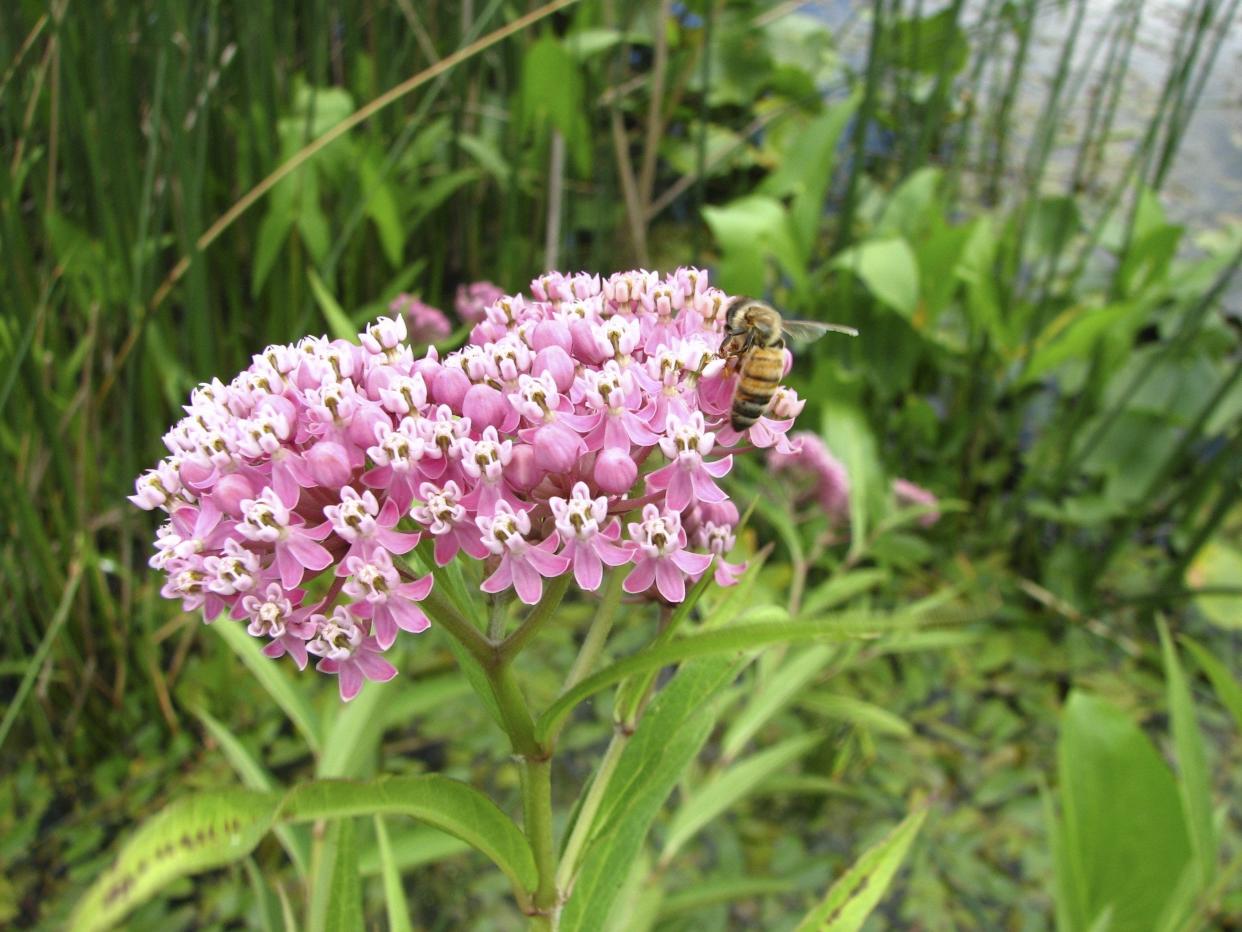
There are nearly 1 million known insect species on Earth, and just 2% of these insects are harmful to plants, animals or humans.
Managing insects in the vegetable garden and home landscape requires an understanding of which insects are actually beneficial to plants or animals (the good), which are harmful to the plants we tend (the bad), and which are just strange curiosities of nature (the ugly).
Most of the time, populations of insects that have the potential to cause damage to plants remain below the threshold in which widespread damage occurs because of biological factors such as the presence of predators and parasites as well as environmental factors such as weather and soil moisture.
Beneficial insects, the good guys in the garden
As opposed to eradicating all insects from the garden, a gardener’s goal should be to create an environment where populations of beneficial insects thrive and naturally keep the populations of harmful insects in check.
Beneficial insects that help to control harmful insects include lady beetles, green lacewings, hover flies, paper wasps and soldier beetles.
Gardening: What is a rain garden and how can it help my landscape, plants and flowers?
Gardeners can help maintain populations of beneficial insects by providing habitat and a food source for these insects.
Flowering herbaceous perennials that produce a large amount of pollen or nectar such as yarrow, milkweed and daisies are excellent food sources for many beneficial insects.
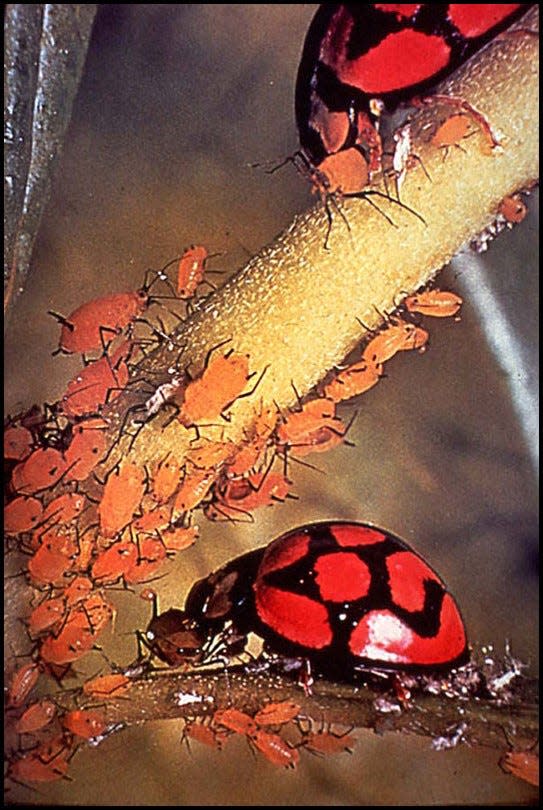
Vary insect control tactics
Relying only on synthetic insecticides to control harmful insects also harms beneficial insects as well as bees and other pollinators.
When attempting to control harmful pests, gardeners should use an Integrated Pest Management approach in which biological and cultural controls are utilized before chemical controls are used.
Cultural controls include tactics such as using row covers as a barrier to exclude insects from plants, planting varieties that are resistant to insects or diseases, planting a trap crop to lure insects away from other crops, and even hand-picking insects to prevent damage.
When chemical controls are used, consider using natural products such as insecticidal soaps, horticultural oils, and botanicals, saving synthetic chemical insecticides as a last resort to prevent widespread damage to plants.
Gardening: What are air plants and how do they grow? We have the scoop
Top 10 most common harmful insects
Depending upon which vegetables you are growing, here is a list of the 10 most common harmful insects you may encounter in your vegetable garden and non-chemical control options for each pest:
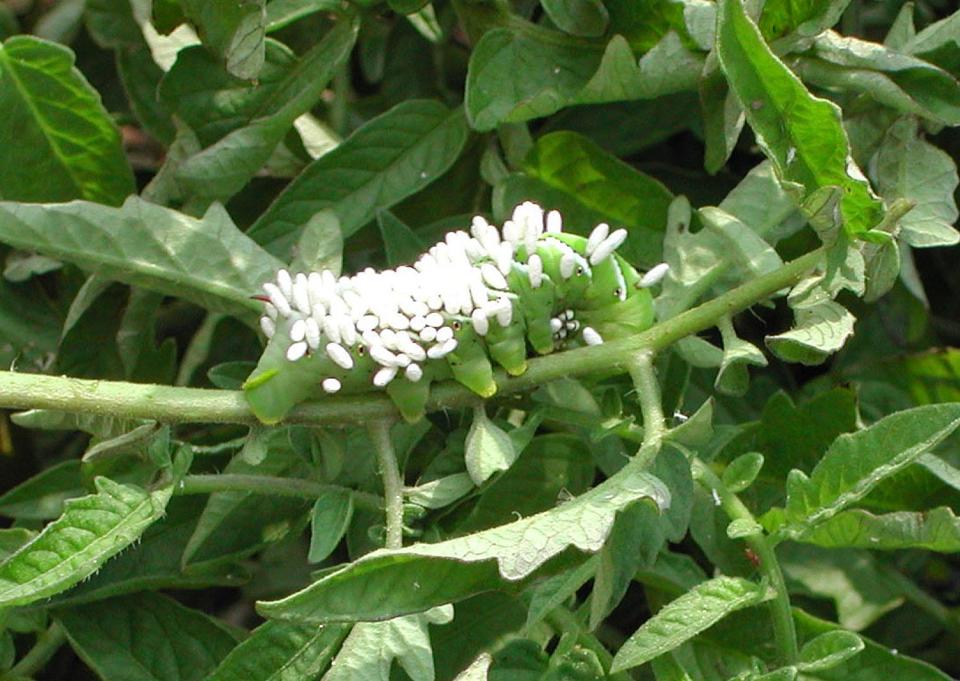
• Tomato hornworm: This large menacing-looking, finger-sized lime-green caterpillar can quickly defoliate tomato plants in late summer with their voracious appetites.
Control options include picking the caterpillars by hand and dropping them into a bucket of soapy water. Many times, a parasitic wasp lays eggs on these insects, which kill the hornworms. If you see hornworms with what looks like white grains of rice embedded in the insect, let nature take its course so that the wasps hatch and find more hornworms to parasitize.
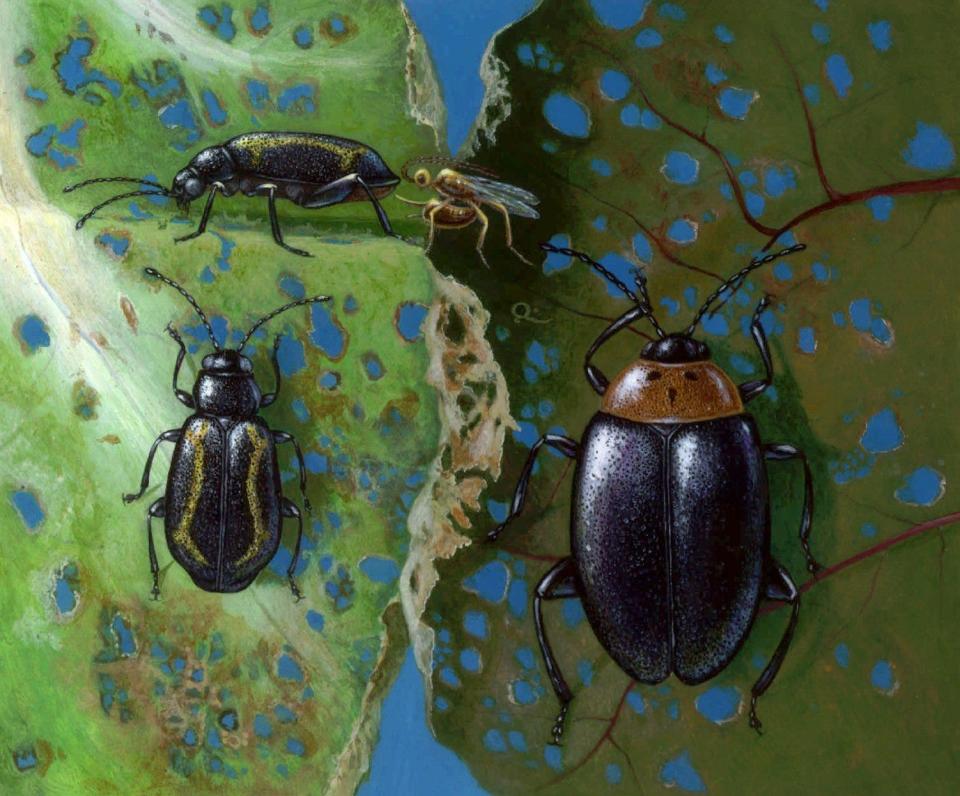
• Flea beetle: These tiny, pinhead-sized black bugs chew small holes in lettuce, spinach and other greens and the leaves of their favorite food — eggplant. Populations of this insect explode in hot, dry weather.
Non-chemical control options include the use of insecticidal soaps, diatomaceous earth, and the use of floating row covers. Be sure to remove row covers when crops such as eggplant flower.
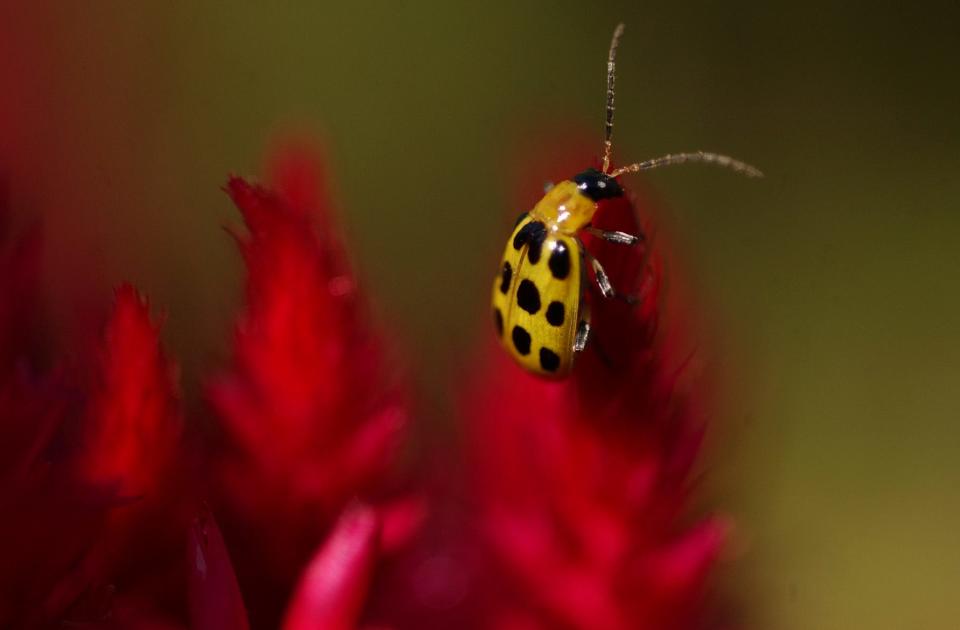
• Cucumber beetle: These small beetles with yellow strips or spots feed primarily on cucumbers but can also attack squashes and sometimes melons. The insect spreads a bacterial wilt and a mosaic virus that quickly kill entire plants.
Non-chemical controls include the use of row covers, delaying planting date until late June, and application of a pyrethrin, which is a botanical insecticide.
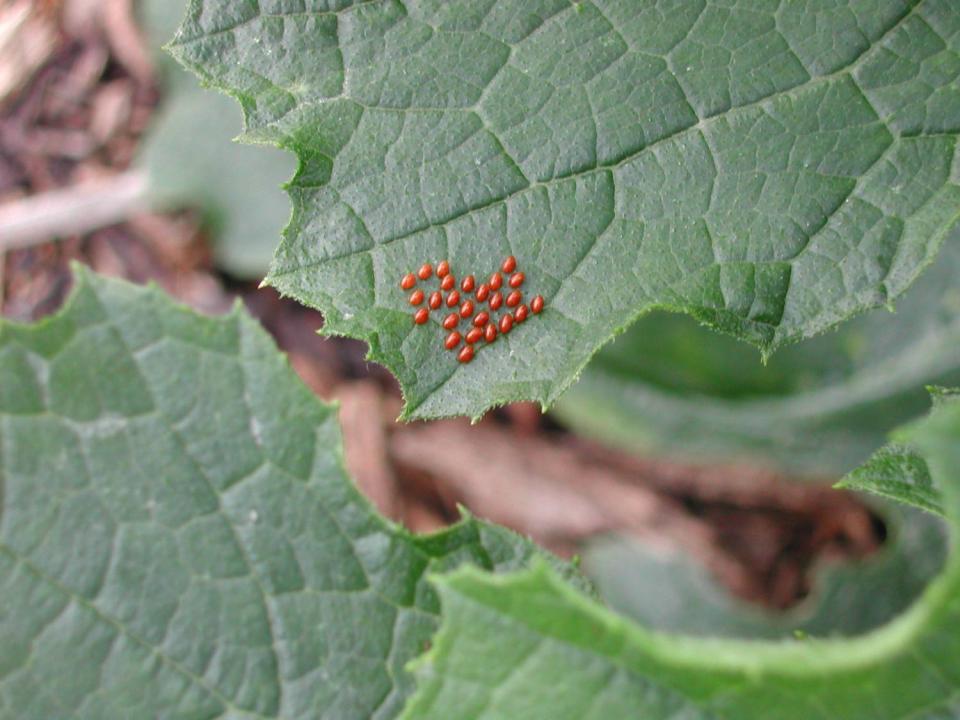
• Squash bug: These shield-shaped, hard-shelled insects suck plant juices, causing squashes and pumpkin plants to wilt and die.
Non-chemical controls include handpicking of insects and their eggs, which can be found on the underside of leaves, and applications of insecticidal soap, pyrethrins or neem oil.
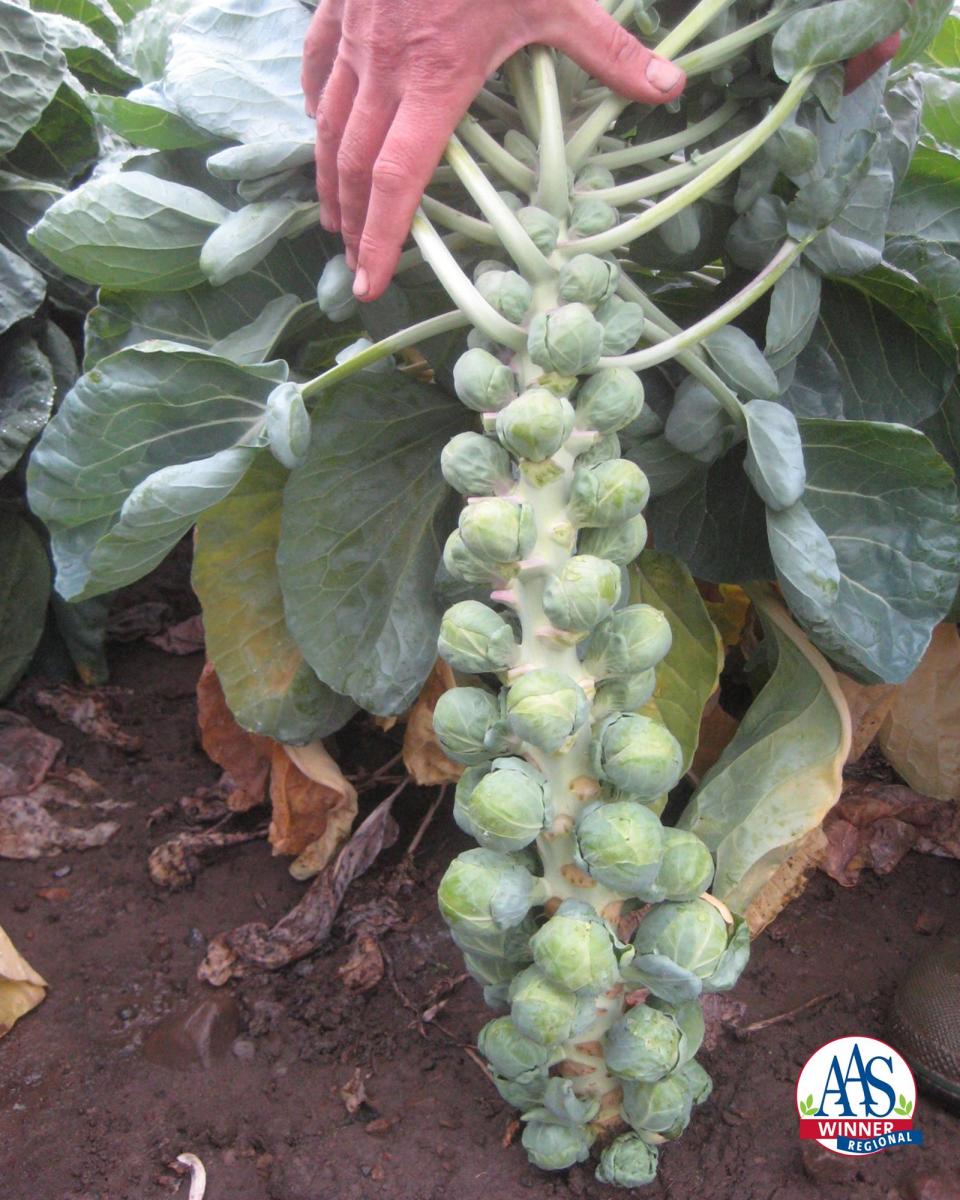
• Cabbage worms: The adults of these small white moths lay eggs that turn into green caterpillars that chew on cabbage, broccoli, cauliflower and Brussel sprouts.
Non-chemical control options include handpicking and the use of row covers.
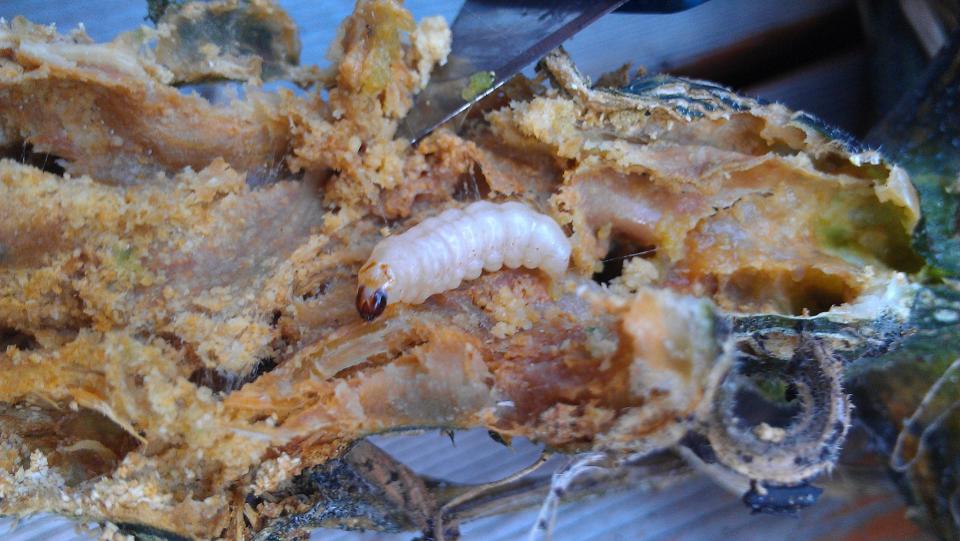
Gardening: Invasive Asian jumping worms are wreaking havoc in Ohio soils
• Squash vine borer: These wasp-like moths lay eggs at the base of squashes and pumpkin plants. Larvae hatch into fat caterpillars that feed inside the stem, eventually killing the plant.
Non-chemical controls include hand removal of caterpillars or wrapping stems with tin foil.
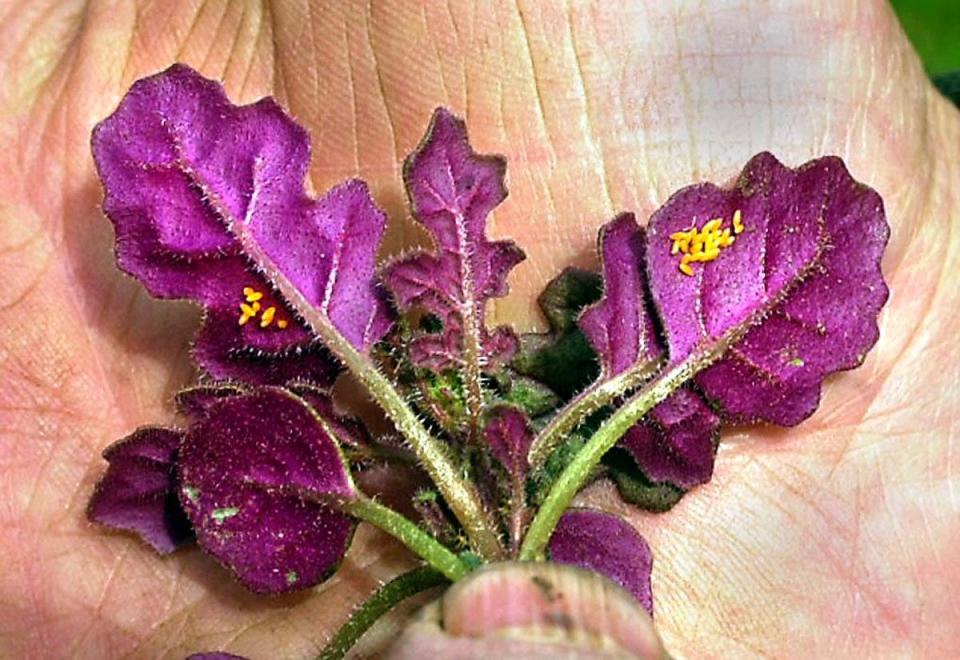
• Colorado potato beetle: This yellow-and black-striped beetle skeletonizes leaves of potato and occasionally tomato, eggplant and peppers.
Handpicking is the simplest non-chemical control option.
• Aphids: These small soft-bodied insects suck plant juices from peas, broccoli, and other cool-season crops leaving behind a sticky substance called honeydew that attracts ants.
Applications of insecticidal soaps or oils or even a stiff spray of water from a garden hose will control these insects.
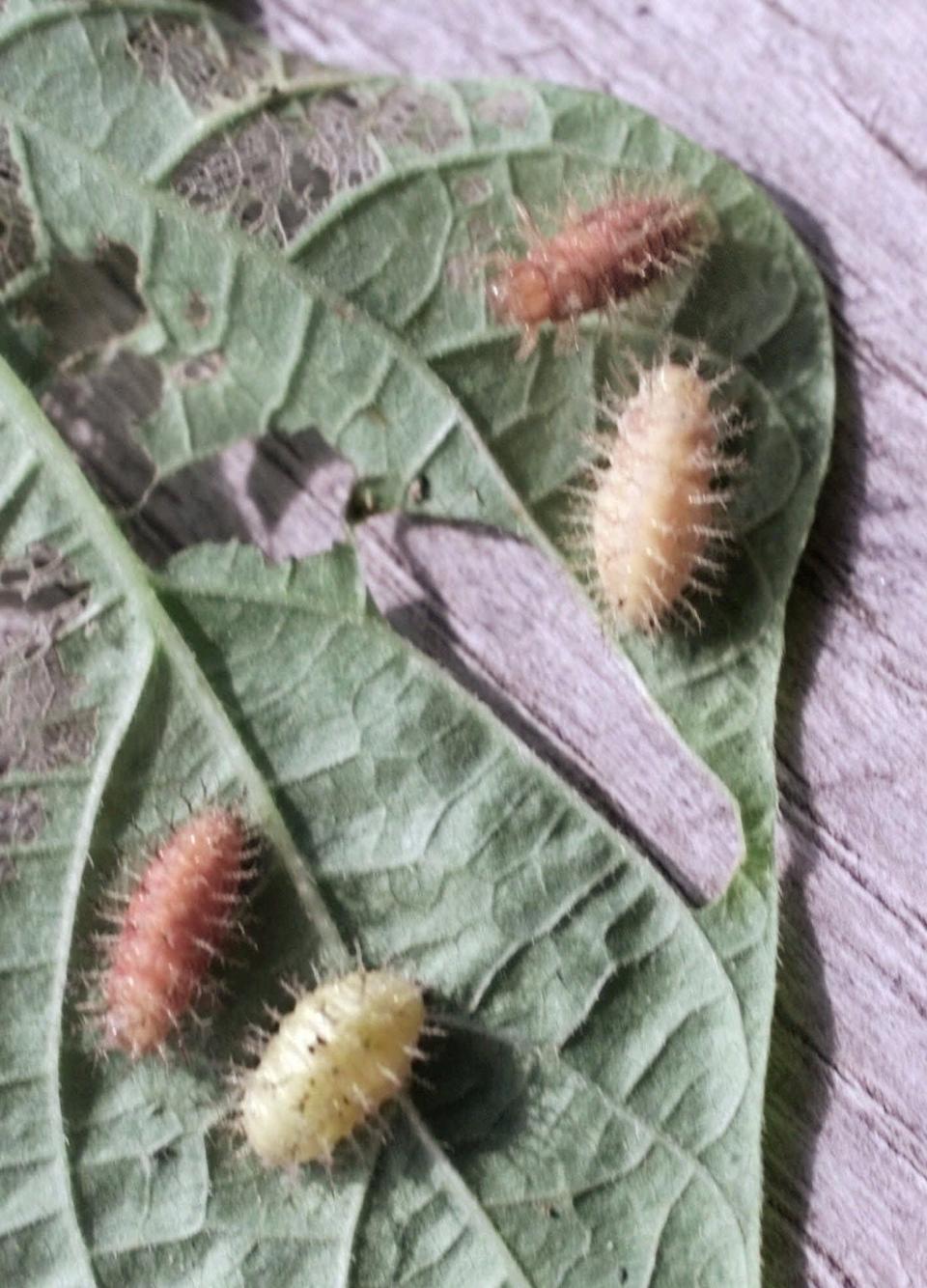
• Mexican bean beetle: These pea-sized yellow- to orange-red beetles with black spots skeletonize leaves of most bean plants.
Row covers and applications of insecticidal soaps or oils will control this insect.
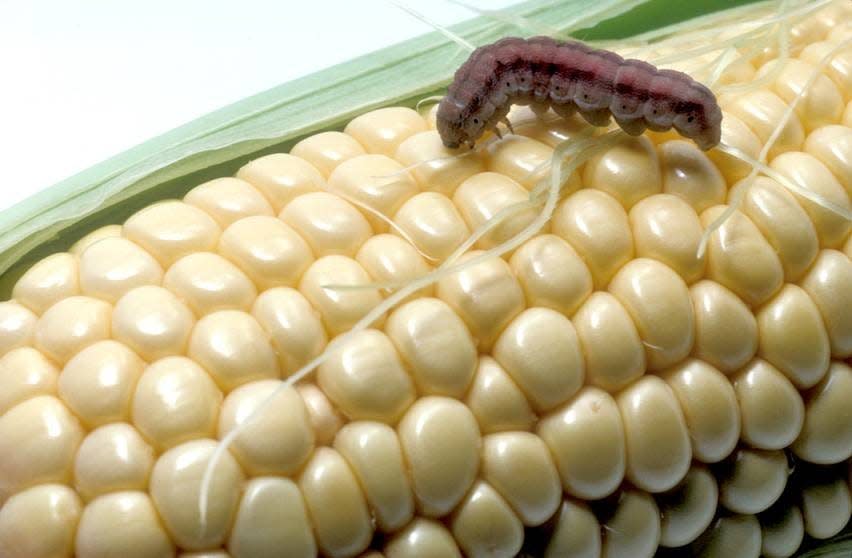
• Corn earworm: Adults of this insect lay eggs on fresh silks of sweet corn and the larvae feed on corn kernels at the tip of the ear.
Encouraging beneficial insects such as lady beetles and planting sweet corn early will help to control this insect.
For more information about controlling pests in the vegetable garden, visit: go.osu.edu/controlvegpests.
This article originally appeared on The Columbus Dispatch: 10 common harmful garden insects and tips to control them

